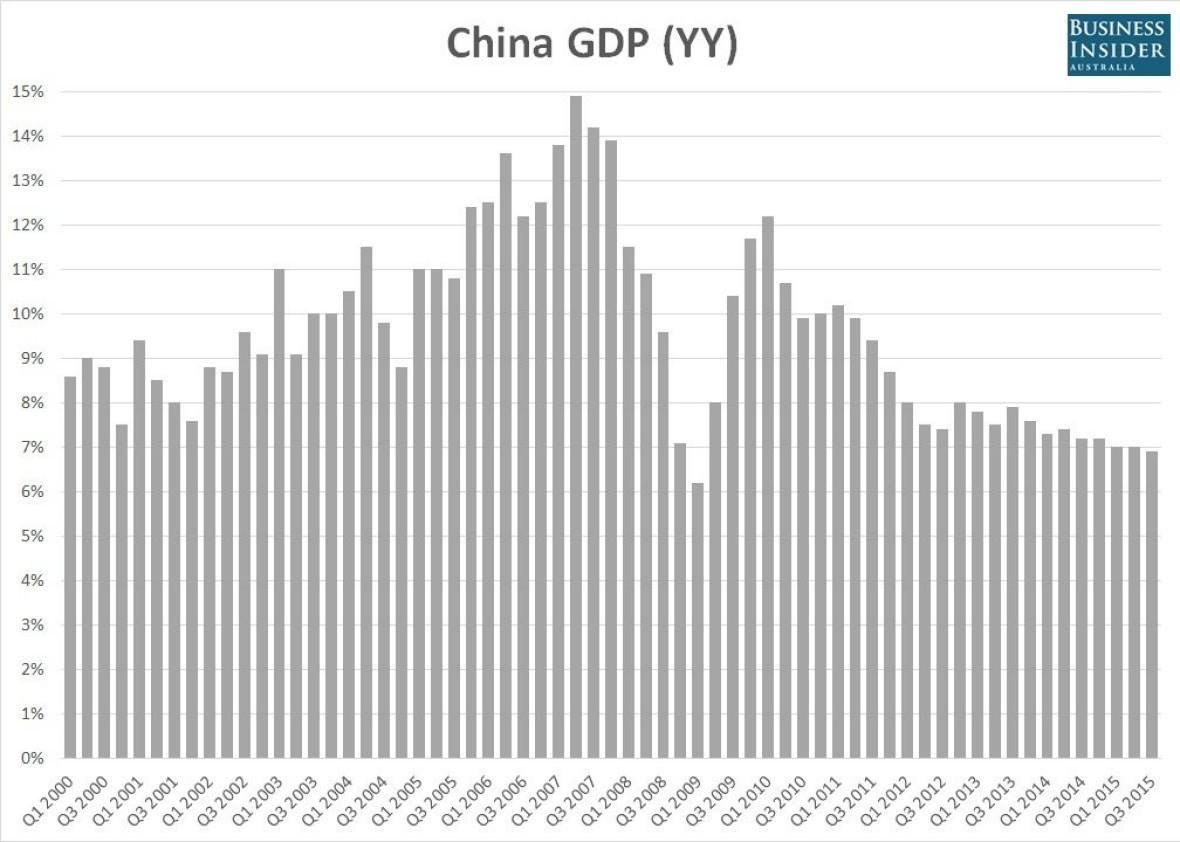This post originally appeared on Business Insider.
Even a time of heightened uncertainty, a majority of markets agree upon one thing: Chinese data is unreliable, particularly figures released by regional governments.
Making the case for market mistrust, a report from Xinhua, a state-run government news agency, released over the weekend stated that “several” local officials in China’s Northeast region admitted to faking economic data in recent years to show high rates of growth when the real numbers were much lower.
According to the China Daily website, citing Xinhua, several officials acknowledged they had significantly overstated data ranging from fiscal revenue and household income to gross domestic product.
“If the past data had not been inflated, the current growth figures would not show such a precipitous fall,” one unnamed official told Xinhua, attempting to explain why growth rates across the region were now among the lowest in the country.
Reflective of just how sharp the deceleration in regional growth has been, Xinhua notes that three years ago Liaoning province’s GDP growth was reported at 9.5 percent, more than triple its current rate of 2.7 percent.
While he has long moved on, current premier Li Keqiang was formerly the party committee secretary of the province in the 1990s.
Jilin, to Liaoning’s north, reported growth of 12 percent three years ago, almost double the 6.3 percent rate recorded so far in 2015. Speaking to the China Daily, an unnamed source in provinces finance department said local officials competed against one another to lure external investment projects.
“They reported the promised investment value, whether it had been achieved or not, as the investment figure,” the source said.
Guan Yingmin, an official in Heilongjiang province—the most northern of all China’s provinces—said past investment figures were inflated by at least 20 percent, which translates to nearly 100 billion yuan ($15.7 billion) according to calculations provided by Xinhua.
Though the general perception is that national data is more accurate than that offered by regional governments, many analysts believe that official economic data—including closely watched GDP—is overstated by China’s government.
In September, Goldman Sachs’ chief Asia-Pacific economist, Andrew Tilton, suggested that China’s economy was growing “a bit below 6 percent,” citing the bank’s China activity indicator gauge.
Addressing CNBC’s Delivering Alpha Conference in July this year, Bill Miller, CEO of LMM Investments, told investors “you can’t trust the numbers.” The remark came in response to Chinese economic growth being reported at 7 percent in the year to June, in line with government forecasts.
In the September quarter of 2015 the government reported that economic growth slowed to 6.9 percent, a figure that beat the median economist forecast for a rate of 6.8 percent.
In three of the prior four GDP reports growth was reported 0.1 percent higher than the figure markets had been expecting.
You can read more here.
See also: Crowdfunding Website Kickstarter Has Hired a Journalist to Look into a Failed Campaign
